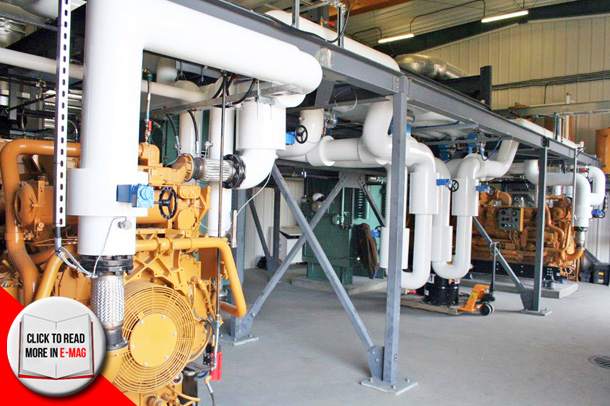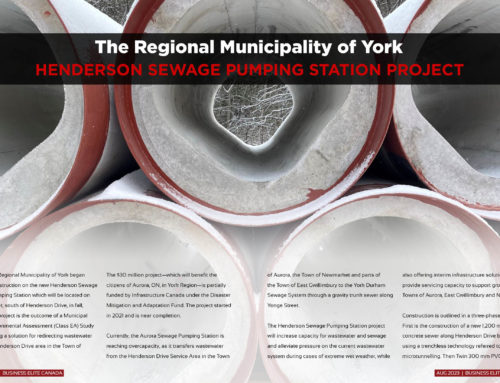Harnessing Power for the People
By Dillon Meilleur
 Saskatoon Light & Power, a division of the City of Saskatoon, has been busy looking for alternative energy resources. The City of Saskatoon is committed to providing the citizens of Saskatoon with sustainable, emission-free energy. Over the last few years, the City of Saskatoon has developed a long-term strategic plan in order to address its energy needs and they’ve been developing a number of initiatives intended to reduce the city’s carbon footprint. This development plan will generate new sources of revenue, create new forms of energy and strengthen the economic stability of Saskatoon.
Saskatoon Light & Power, a division of the City of Saskatoon, has been busy looking for alternative energy resources. The City of Saskatoon is committed to providing the citizens of Saskatoon with sustainable, emission-free energy. Over the last few years, the City of Saskatoon has developed a long-term strategic plan in order to address its energy needs and they’ve been developing a number of initiatives intended to reduce the city’s carbon footprint. This development plan will generate new sources of revenue, create new forms of energy and strengthen the economic stability of Saskatoon.
Kevin Hudson, Metering and Sustainable Electricity Manager at the City of Saskatoon, began working with the city over eight years ago. Hudson is an electrical engineer with 23 years of combined experience in gas and electricity; he is no stranger to the industry. He brings expertise and innovation to the table and knows what it takes to make a difference. “We have a strategic plan that looks to the long-term future,” he said. Hudson is focusing on planning and securing the future of Saskatoon. The City of Saskatoon is currently working on a number of projects revolving around alternative forms of energy. One of the most exciting and predominant developments that the City of Saskatoon has delivered is the Landfill Gas to Energy Project.
Landfill Gas to Energy Project
Through this intricate process, harmful landfill gases are captured and used to generate electricity. When waste decomposes it produces greenhouse gases (methane and carbon dioxide) that escape into the atmosphere. The City of Saskatoon captures these gases and utilizes them to generate energy. This project is now fully operational, providing enough electricity to power 1,300 homes annually. The project is predicted to generate upwards of $1.3 million in revenue for the city each year. The Landfill Gas to Energy Project will improve local air quality, reduce greenhouse gas emissions, produce energy and promote economic growth. The project cost approximately $15 million, but the benefits far outweigh the price. Jointly funded by the Government of Canada and the City of Saskatoon, this project is a true testament to Canada’s move towards new forms of green energy.
The City of Saskatoon is making tremendous strides in solving their energy dependency. Along with the Landfill Gas Energy Project, the City of Saskatoon has a number of innovative projects underway, such as converting wood waste into biogas and building a proposed hydropower station, pending City Council approval. The proposed hydropower plant at an existing weir in Saskatoon would utilize the raw power of the local river to generate energy. This eco-friendly facility could provide a green source of energy to approximately 5,000 homes in Saskatoon, and create economic prosperity for the city.
The City of Saskatoon is undertaking the construction of a Green Energy Park adjacent to the Landfill Gas to Energy Facility. The goal of the Green Energy Park is to showcase the city’s alternative energy projects as well as to promote energy conservation and sustainable energy solutions. “It’s proven technology,” Hudson said. “We do a lot of school tours at our facility. We always show it as one of the things Saskatoon is doing to reduce our footprint.” The City of Saskatoon is proud of its alternative energy projects and is working hard to promote awareness and in still knowledge.
Reducing dependency on fossil fuels
Saskatoon Light & Power sells about 1,100 gigawatt hours (GWh) of electricity annually. About half of that power comes from coal, a non-renewable fossil fuel. The City of Saskatoon is working hard to alleviate its dependency on fossil fuels and these new projects can change the way the city powers their community. As it stands right now, there is currently no legislation in Saskatchewan revolving around the capture of greenhouse gas emissions produced from landfills. Almost every province in Canada has a mandate that says gases emitted must be captured. As they look toward the future, the City of Saskatoon has taken it upon themselves to put this initiative into action.
An intricate part of the city’s development plan is waste reduction and diversion, which is reflected in each of the projects. With this level of proficiency, anything is possible. The City of Saskatoon is constantly looking for alternative sources of revenue in hopes of reducing the tax burden on its residents. These projects aim to do just that. The unique approach that the City of Saskatoon is proposing may just be the answer to all of their energy needs.






